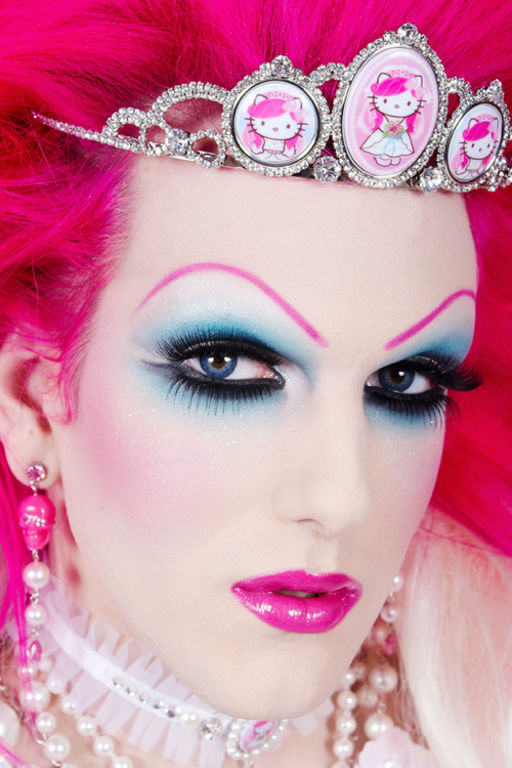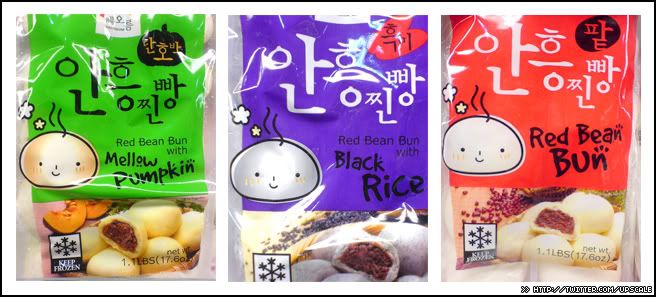One thing I've learned from Rob Walker's Buying In is that our "screenager" generation (a term coined by Douglas Rushkoff) is a more skeptical and hard-to-reach audience than consumers of yore. This isn't to say we're immune from marketing campaigns (宣传攻势 Pinyin: xuan1 chuan2 gong1 shi4) or corporate attempts to suck our wallets dry. What Walker is saying is that ad agencies and marketing gurus have gotten smarter at integrating campaigns into our every day digital lives.
Take Twitter for example. Mashable.com wrote a follow-up article regarding HubSpot, a "marketing software company that enables inbound marketing through the use of social media, blogs and search engine optimization."
And to include all things Hollywood, Horatio from CSI drives a Hummer, Charles Crews uses a can of Diet Coke to sabotage a "hitman woman" in the "Hit me Baby" episode, Pepsi is launching their own Chinese TV show and the movie Cloverfield used alternate reality games (ARG) via forums to build pre-release hype (much like Lost and Halo ARG initiatives).
If you've taken any advertising classes in college, you'll know that curiosity is one of the best selling points a marketer can use to lure in potential cash cows like you and I. Mixed with murky advertising techniques (Rob Walker uses "murketing" for short) like the aforementioned strategies, the line where advertising stops and ends has been diluted with a mess of spam Tweets and irrecognizable TV programming laden with product advertising.
As consumers evolve into a smarter and more digitally savvy group, TiVo fast-forwarding and blocking randomly generated Twitter accounts will be more common. Ultimately, we'll make our way through the murkiness.
So what's another strategy marketers can use to make sure consumers will willingly listen to what they have to say? Look to the Japanese and Koreans for answers.
 I love Hello Kitty. She's cute, fun, absolutely adorable and a symbol for all things young. Rob Walker's chapter on projectability says that Hello Kitty's success is in part due to her projectability, that is her mouthless, blank expression. You can cry with Hello Kitty, you can laugh with Hello Kitty. In other words, Hello Kitty is successful because she is a blank slate in which consumers can define and/or reappropriate the meaning.
I love Hello Kitty. She's cute, fun, absolutely adorable and a symbol for all things young. Rob Walker's chapter on projectability says that Hello Kitty's success is in part due to her projectability, that is her mouthless, blank expression. You can cry with Hello Kitty, you can laugh with Hello Kitty. In other words, Hello Kitty is successful because she is a blank slate in which consumers can define and/or reappropriate the meaning.
Note how many segments have adopted Hello Kitty and made her their own: kids, young Asian women, gay men (e.g. Jeffree Star), goths.

 Sanrio's smart, savvy marketing team has made an array of products catering to almost all of these audience segments. There's a Hello Kitty Gloomy Bear with blood all over her face for goths (Sanrio swears it's ketchup and made her hold a ketchup bottle), there's punk Hello Kitty rocking an eye patch for emo punk kids and even products for men. Male Hello Kitty briefs, anyone?
Sanrio's smart, savvy marketing team has made an array of products catering to almost all of these audience segments. There's a Hello Kitty Gloomy Bear with blood all over her face for goths (Sanrio swears it's ketchup and made her hold a ketchup bottle), there's punk Hello Kitty rocking an eye patch for emo punk kids and even products for men. Male Hello Kitty briefs, anyone?
But what's this have to do with anything? The Japanese success of Sanrio and Sanrio-X characters has since spawned similarly successful products in Korea (think Blue Bear, Pucca and Mashimaro) and their popularity hasn't faded one bit.
On a recent trip to H-Mart in Federal Way (a Korean style Ranch 99 with an awesome Korean restaurant inside called Myung Dong Restaurant), I came upon the cutest bag of mochi buns ever.
 Maybe I'm just a sucker for cute things, but who can't resist this adorably designed package of mochi buns?
Maybe I'm just a sucker for cute things, but who can't resist this adorably designed package of mochi buns?
The "cuteification" of things (even as odd as mochi buns) is something Western marketers should try more often. In an aisle full of mochi buns and other Korean frozen goods, the packaging above was the first and only thing that caught my eye.
Recently, Canadian ad agency Leo Burnett Toronto created a unique ad campaign for Toronto's Humane Society. They feature cutely vectored animals (e.g. dogs, birds, cats, bunnies) in a simple one-color background with affectionate, heart-warming copy. The ads received not only national attention, but awards for its simple yet innovative design.
But wait.
Haven't the Japanese and Koreans been doing "cuteification" already?
So as for Western marketers and ad agencies, please know that flooding consumers with so much murky content can only reap in profits for so long. Before you start scribbling away your next brilliant marketing campaign, there's never been a better time to bust out your Domokun pens for some much needed Eastern inspiration.
After all, Hello Kitty's been around much longer than most ad agencies around the world.
Take Twitter for example. Mashable.com wrote a follow-up article regarding HubSpot, a "marketing software company that enables inbound marketing through the use of social media, blogs and search engine optimization."
And to include all things Hollywood, Horatio from CSI drives a Hummer, Charles Crews uses a can of Diet Coke to sabotage a "hitman woman" in the "Hit me Baby" episode, Pepsi is launching their own Chinese TV show and the movie Cloverfield used alternate reality games (ARG) via forums to build pre-release hype (much like Lost and Halo ARG initiatives).
If you've taken any advertising classes in college, you'll know that curiosity is one of the best selling points a marketer can use to lure in potential cash cows like you and I. Mixed with murky advertising techniques (Rob Walker uses "murketing" for short) like the aforementioned strategies, the line where advertising stops and ends has been diluted with a mess of spam Tweets and irrecognizable TV programming laden with product advertising.
As consumers evolve into a smarter and more digitally savvy group, TiVo fast-forwarding and blocking randomly generated Twitter accounts will be more common. Ultimately, we'll make our way through the murkiness.
So what's another strategy marketers can use to make sure consumers will willingly listen to what they have to say? Look to the Japanese and Koreans for answers.
 I love Hello Kitty. She's cute, fun, absolutely adorable and a symbol for all things young. Rob Walker's chapter on projectability says that Hello Kitty's success is in part due to her projectability, that is her mouthless, blank expression. You can cry with Hello Kitty, you can laugh with Hello Kitty. In other words, Hello Kitty is successful because she is a blank slate in which consumers can define and/or reappropriate the meaning.
I love Hello Kitty. She's cute, fun, absolutely adorable and a symbol for all things young. Rob Walker's chapter on projectability says that Hello Kitty's success is in part due to her projectability, that is her mouthless, blank expression. You can cry with Hello Kitty, you can laugh with Hello Kitty. In other words, Hello Kitty is successful because she is a blank slate in which consumers can define and/or reappropriate the meaning.Note how many segments have adopted Hello Kitty and made her their own: kids, young Asian women, gay men (e.g. Jeffree Star), goths.

 Sanrio's smart, savvy marketing team has made an array of products catering to almost all of these audience segments. There's a Hello Kitty Gloomy Bear with blood all over her face for goths (Sanrio swears it's ketchup and made her hold a ketchup bottle), there's punk Hello Kitty rocking an eye patch for emo punk kids and even products for men. Male Hello Kitty briefs, anyone?
Sanrio's smart, savvy marketing team has made an array of products catering to almost all of these audience segments. There's a Hello Kitty Gloomy Bear with blood all over her face for goths (Sanrio swears it's ketchup and made her hold a ketchup bottle), there's punk Hello Kitty rocking an eye patch for emo punk kids and even products for men. Male Hello Kitty briefs, anyone?But what's this have to do with anything? The Japanese success of Sanrio and Sanrio-X characters has since spawned similarly successful products in Korea (think Blue Bear, Pucca and Mashimaro) and their popularity hasn't faded one bit.
On a recent trip to H-Mart in Federal Way (a Korean style Ranch 99 with an awesome Korean restaurant inside called Myung Dong Restaurant), I came upon the cutest bag of mochi buns ever.
 Maybe I'm just a sucker for cute things, but who can't resist this adorably designed package of mochi buns?
Maybe I'm just a sucker for cute things, but who can't resist this adorably designed package of mochi buns?The "cuteification" of things (even as odd as mochi buns) is something Western marketers should try more often. In an aisle full of mochi buns and other Korean frozen goods, the packaging above was the first and only thing that caught my eye.
Recently, Canadian ad agency Leo Burnett Toronto created a unique ad campaign for Toronto's Humane Society. They feature cutely vectored animals (e.g. dogs, birds, cats, bunnies) in a simple one-color background with affectionate, heart-warming copy. The ads received not only national attention, but awards for its simple yet innovative design.
But wait.
Haven't the Japanese and Koreans been doing "cuteification" already?
So as for Western marketers and ad agencies, please know that flooding consumers with so much murky content can only reap in profits for so long. Before you start scribbling away your next brilliant marketing campaign, there's never been a better time to bust out your Domokun pens for some much needed Eastern inspiration.
After all, Hello Kitty's been around much longer than most ad agencies around the world.







